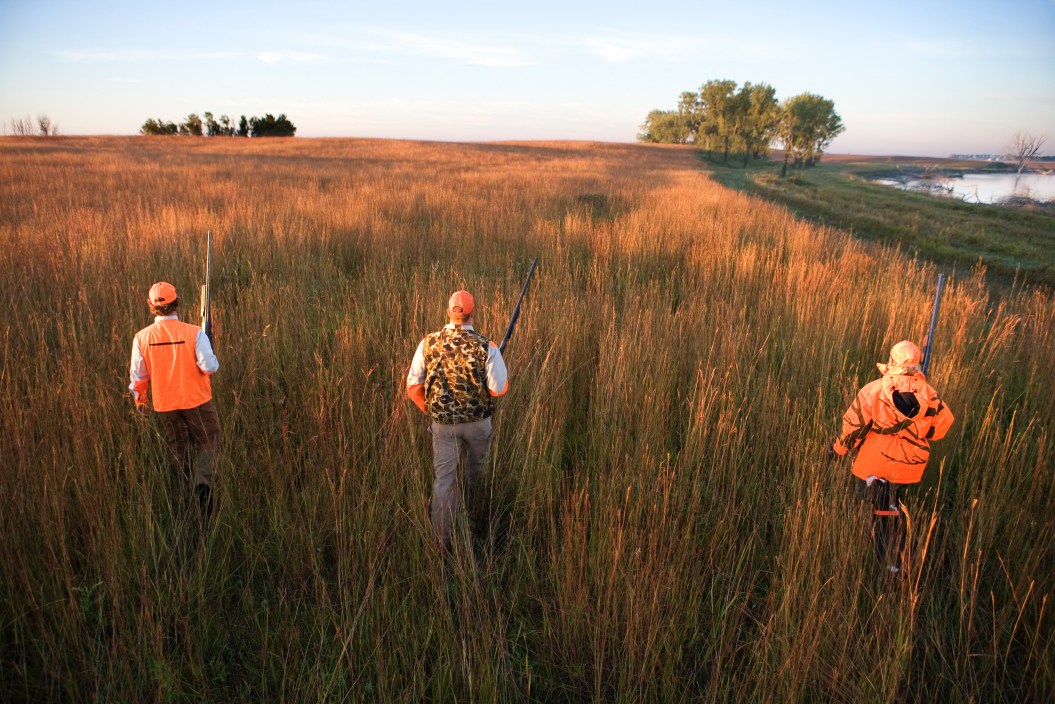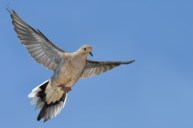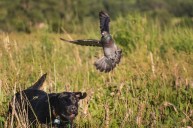For many in the bird-hunting world, hunting doves is a rite of passage. Dove hunting is great for those who are new to the sport of hunting: it's a great setting to learn about firearm safety; it features tons of action to improve your shooting skills; and at the end of the day, you'll learn how to clean birds, too.
Depending on what state dove hunters are in, they're usually the first out every fall, kicking off the bird-hunting season with a bang. Call it a "soft start." Unlike pheasant or chukkar hunting, dove hunting requires relatively little preparation and setup, making it a great weekend or evening activity.
Though it's an accessible way to hunt, it's still important to know what you're doing when dove hunting. Whether you're setting off on your first dove hunt or just need a refresher this season, here's everything you need to know about Dove Hunting 101.
Dove Hunting Preparation
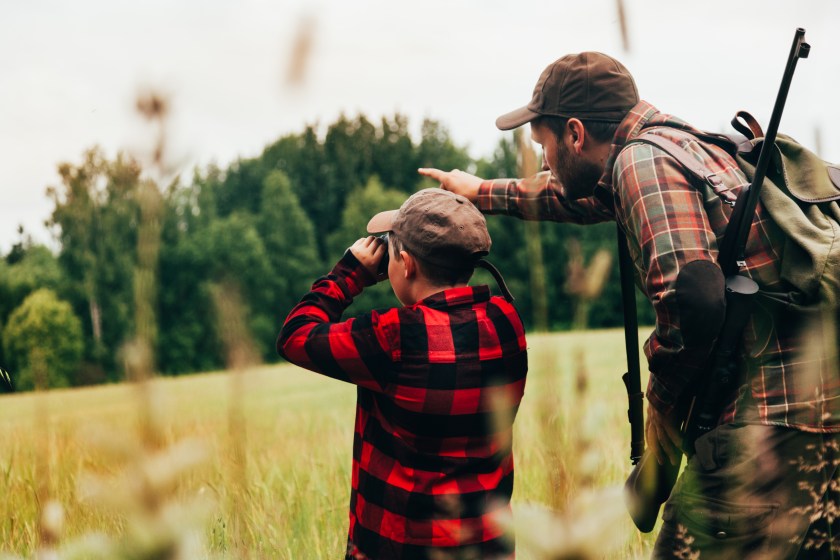
Getty Images, visualspace
Why Dove Hunting?
Perhaps because of a low bar for entry, doves are the most hunted migratory bird in the United States. Dove populations have remained healthy over the years, ensuring hunters often see many in the field. Dove hunts are popular for getting kids into hunting; more experienced hunters love them too because hunting doves can be action-packed and accessible.
Unlike other kinds of game bird hunting, in dove hunting, you position yourself and let the birds come to you rather than the other way around. No need to go out bushwacking. If you know where the birds like to hang out, throw down a chair or a hard bucket, plop down, and wait for them to fly in.
As the bird that really kicks off hunting season, doves give hunters the chance to bag several birds and sharpen their marksmanship before getting into the field for pheasants, ducks, and other waterfowl and game birds.
Don't think it's too easy, though: Doves fly high and fast, making them one of the more action-packed birds to hunt.
Legal Requirements and Hunting Regulations
Dove hunting is legal nationwide, with the exception of Michigan, New York, New Hampshire, Vermont, Maine, Massachusetts, Connecticut, and New Jersey. For the remaining 42 states that currently allow dove hunting the season kicks off at the beginning of September. Every state requires a valid hunting license, but depending on which state you will be hunting in, you may be required to have a permit specifically for migratory birds in order to hunt doves.
Before you head out on any hunt, check dove hunting regulations in your state. A quick Google search should provide you with regulations from the U.S. Fish and Wildlife Service about season dates and state-specific permits.
Interestingly, in many states, the local government has programs allowing private landowners to open their land up for public use during hunting season. Check for these, as they can open up more areas for you to hunt during the dove season.
Depending on the state and time of year, there are limits to the number of doves you can harvest. In most states, the bag limit is 15 for the mourning dove. Such a high number allows you to really get after it with these fun and fast birds.
Dove Hunting Gear
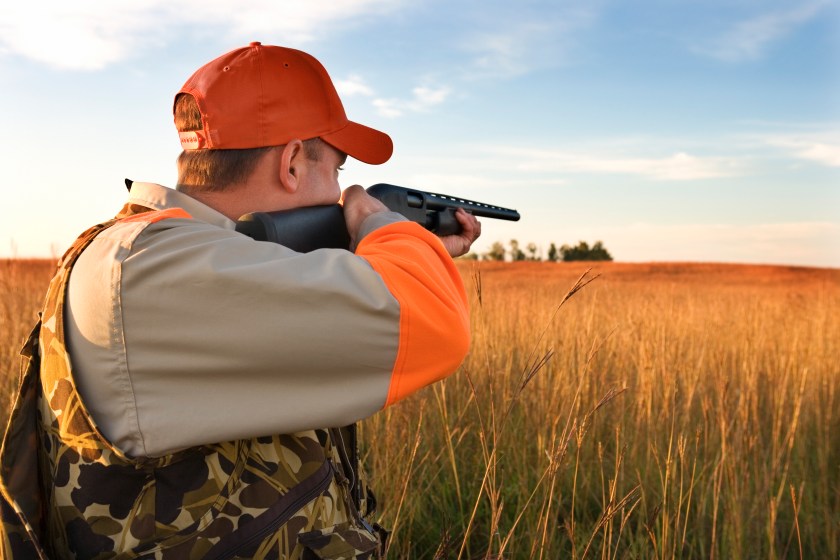
Getty Images, Jupiterimages
The Best Guns For Dove Hunting
Shotguns are the firearm of choice for hunting doves, coming in many sizes. Though some sizes are more popular than others, the shotgun you select should be based on what you are most comfortable shooting.
- For small beginners and young hunters, a .410 shotgun is a great option, as it's light weight makes it easy to handle yet is still powerful enough to take down a dove.
- The most popular options for dove hunting are a 28-guage or a 20-gauge; these are still relatively lightweight and pack plenty of punch, making them ideal for beginners and seasoned hunters alike.
- A 12-gauge, the most common shotgun size in the US, is a popular pick as well, though to many can seem like overkill for dove hunts.
- A 20-gauge seems to be the happy middle-ground-sized shotgun for most dove hunters in the U.S.
Before you even get out in the field with the birds, be sure to practice at least a few rounds with your gun. Doves fly fast, making them hard to hit, so the more comfortable and accurate you can be with your firearm, the more likely you are to have more fun and leave with your limit. Getting out skeet or trap shooting prior to the season will give you the practice needed to hit moving targets. These provide a great opportunity to work on keeping your eye on the target and continuing your movement through the shot, both great skills to have honed before dove hunting.
The Best Ammunition for Doves
No matter your gauge, a ¾-inch shell size no. 7, 8, or 9 will be the best ammo option. Doves are small, delicate birds, so anything larger than a 7 (the smaller the number, the larger the ammo) is overkill for these birds. Anything larger than a 7 will leave little salvageable meat.
A side note about ammunition: increasingly, states are buckling down on restrictions for non-toxic shot. We recommend using steel shot rather than lead.
Do I Need a Choke to Hunt Doves?
If you have a shotgun with interchangeable chokes for dove hunting, you will want to adjust depending on the hunting location and conditions. Anything from an improved cylinder to an improved modified choke will serve you well in dove hunting. For small fields and early season days when the birds are close to you, an improved cylinder or a skeet choke is appropriate. These chokes will spread wide quickly, helping you take down more birds.
On the other end of the spectrum, in late season, larger fields, or anytime the birds are farther away, you will want to lean more toward an improved modified choke to reach the birds.
Using a single-barrel shotgun with a modified choke is common. This middle-of-the-road setup will serve you in various scenarios while dove hunting.
The Best Clothing and Accessories for Dove Hunting
One of the best things about dove hunting: you don't need a lot of accessories. Wear weather-appropriate hunting clothing, and avoid bright colors. Most camo patterns work great.
I like to keep things lightweight and minimalist for a dove hunt. A simple dove belt with three pouches gives you two for shells and a bird bag on your backside. You'll want to pick up a few decoys to draw the dove in, as well as a good seat (can be as simple as a bucket) to hunt from.
Dove Hunting Safety
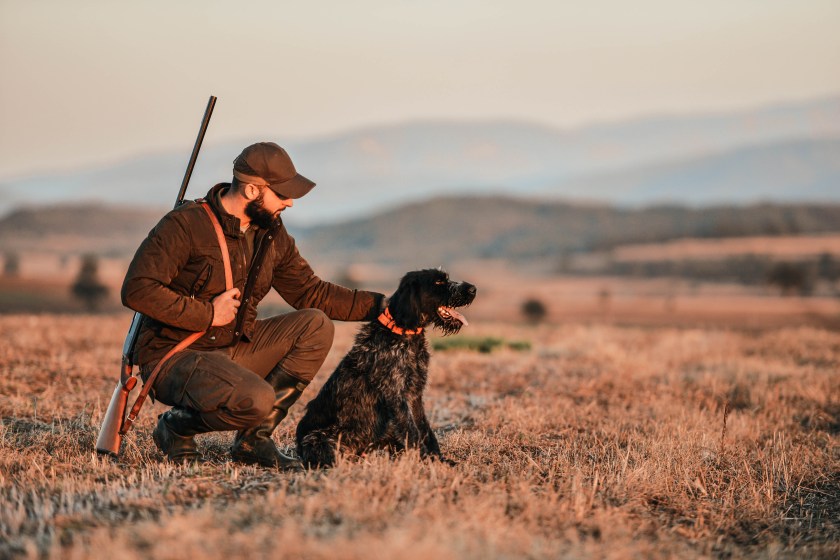
Getty Images, Photographer and Illustrator
Sure, we want to bag some birds, but being safe and smart should be the top priority. Make sure you know your basic firearm safety, like how to carry a shotgun.
- Treat it like it's loaded at all times.
- Keep your finger off the trigger until you're ready to shoot.
- Know what's behind your intended target.
If it's your first time hunting make sure to get enrolled in a hunter education class before the season kicks off.
Keeping aware of your surroundings is one of the most important safety tips. When setting up in a field with your group, know what's around you on all sides. Dove fields are often in agricultural areas, so ensuring you keep your distance from any buildings on the property and knowing where you have a clear shooting lane will protect everyone.
Dove hunting is exciting. Don't let this excitement get the best of you, though. Take shots that are safe, and know that if a shot doesn't seem right, there will be more birds!
Safety Gear
Because dove hunting is active and a lot of shots will be taken by you and anyone you are hunting with, ear and eye protection are essential. Keeping your eyes covered from the time you arrive at the field is a smart choice.
Ear protection is up for debate with some hunters; you want to protect your ears from the loud shotgun blast, but you also want to be able to hear your surroundings. Especially hunting in a group like this, knowing what's going around you is critical. Electronic ear protection options for hunting only tune out noise over a certain decibel, making them a great option for the dove field.
Scouting and Planning for the Hunt
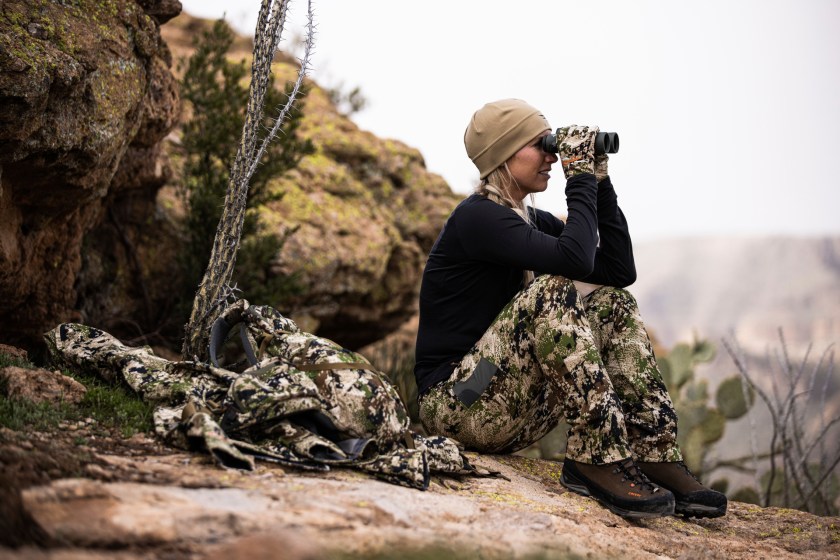
Sitka
Get a jump on scouting before the season opens. Watching for doves in your area, learning where they like to hang out, and the areas they are likely to prefer will help your season be successful. Scouting and working on your shot to prepare for opening day are the most beneficial actions you can do leading up to the hunt.
Ideal Hunting Locations
The perfect dove-hunting area will have a few features. The main one is a food source. A dove's diet consists largely of grain and seeds, so agricultural fields are ultra-popular hunting locations, but they enjoy plenty of native plants as well such as ragweed and doveweed. Safflower, sunflower, millet, and wheat fields are top choices in their diets.
Doves also need a place to roost nearby. A field with power lines nearby or trees is great; they will fly out of those roosts down to the fields to eat. Water sources are also important for doves. Finding a field with a water source close by is key. Look for one that has easily accessible water, irrigation ditches, or ponds. Doves drink water multiple times a day, and more so in the morning and evening. Find where they roost and position yourself where you have clear shooting lanes along their route to water and the field.
Weather and Time
As the temperatures drop in the evenings but the afternoons remain warm, you know you are headed for prime dove season. Getting in the field a couple of days before any colder weather or thunderstorms will improve your chances of catching some birds migrating from the direction of the incoming weather.
Many hunters prefer getting to the fields before the first light, so they can set up and wait for sunrise and the doves to leave their roost. As the sun rises, the birds wake up and fly to the field to eat or drink, so it's a great time to catch them while they are getting active for the day. Evenings are also great as they fuel up before flying back to their resting spot for the night.
Middle-of-the-day hunting is less common. The birds are still active, but their activity level will be lower than at the beginning and end of the day. During the day, doves spend more time on the ground feeding and are less predictable. It's also going to be hot, so save yourself some torture and stick to the beginning or end of the day.
Should You Use Dove Decoys?
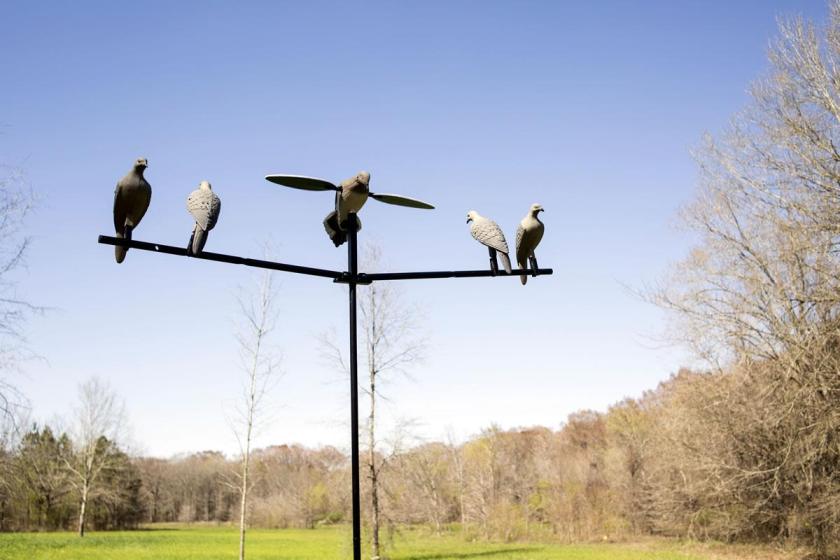
MOJO Outdoors
Dove decoys are most common in duck and dove hunting. Though not used by all hunters, the ones that do swear by them. Placing a stationary decoy in the field will signal doves that there are no predators nearby and it's safe to land there. Setting a few out in your hunting field is a great way to draw birds in. Doves are likely to feed in pairs and as a whole group, so staging a couple of decoys on the ground together in a few spots is a great way to set up the field. Spinner decoys work well and are great at grabbing the attention of nearby doves. The spinning of the decoy's wings looks like flapping, and that movement attracts birds from longer distances.
A Successful Dove Hunt
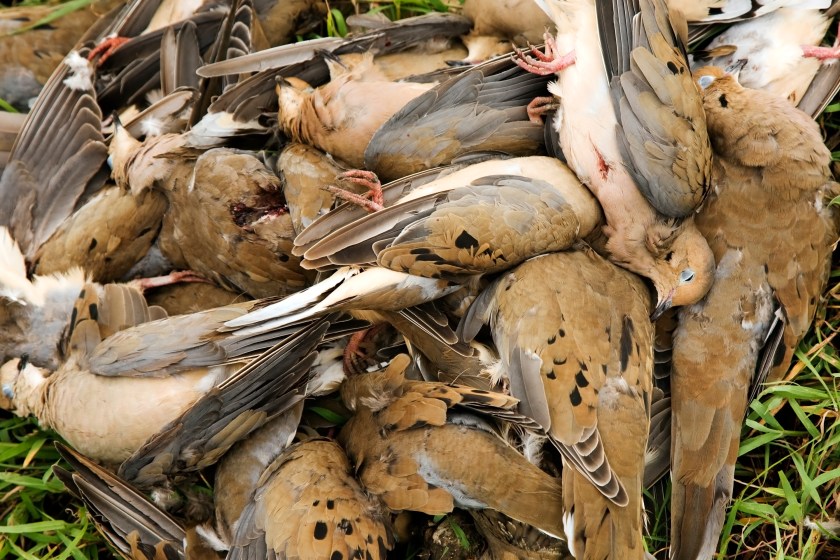
Getty Images, jkaufmann88
Now that you have your hunting gear, practiced your shot, and know where to find the birds, it's time to head out and hunt. Arrive at the desired time, keep movement limited, and wait for the doves to fly in. The birds can spook easily, so keeping your movements small while waiting will improve your chances of having them fly in close enough to shoot. Seeing the doves you've been waiting for finally approach you will be exciting, but resist the urge to shoot at the first one. Wait until they are closer to your line, then aim a little ahead of the bird and shoot.
You Shot a Dove. Now What?
You've collected all your doves from the field and put them in your bird bag before returning to your vehicle. Now it's time to breast the bird. Doves are fairly simple to breast; all you'll need is a place to dispose of the body, a cooler of ice, water, and a knife. Your first few will take a little time, but once you get the hang of it, breasting a dove is easy.
There are a couple of ways to do this and plenty of YouTube videos you can watch to help you out. The easiest way to do this in the field is to hold the bird on its back in your hands and wrap its wings around to the back side. Grab the tail and legs and fold those toward the back as well. Now that you have a clear view of the breast, locate the small V-shaped bone toward the bottom of the breast. Stick your thumb into that V and pull up and away; this will lift the breast right off of the bird. Once you have it pulled up, you can peel the skin and feathers off. There will be attached two spots near the neck, which you can cut with a knife to fully detach the breast. You are now left with just the breast; pluck off any remaining feathers, rinse it with water, and put it on ice until you get home.
Breasting the bird can be done in the field or at home if you are nearby. You want to separate the breast from the body as soon as possible so you don't spoil your fresh meat. Breasting is definitely the worst part of the hunt, but you now have fresh game meat to cook up.
How to Cook Dove
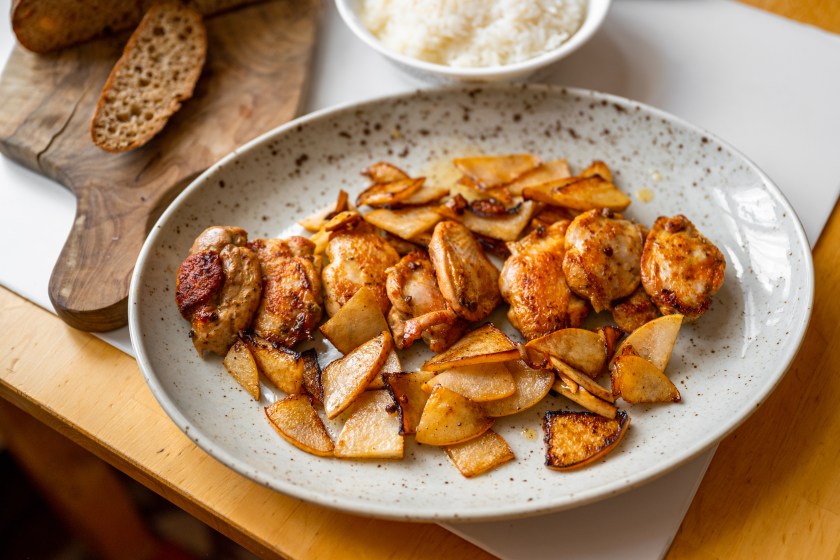
Getty Images, hanbr
A dove breast isn't going to give you a lot of meat, but they are tasty. There are a lot of different ways to cook dove; some people like to smoke the breasts, and others wrap them in bacon before grilling them. If you want to get a little more adventurous you can make fried dove tenders by battering and pan-frying the breasts, just like you would chicken nuggets. Another excellent way to enjoy dove is to marinate in teriyaki sauce, grill the breasts, and serve it over rice with veggies for an amazing Asian-inspired bowl.
While one might think a cooked dove tastes like turkey or chicken, there is really nothing to compare the taste to. It is a dark meat bird, a little on the gamey side, but without a strong flavor. Marinating is popular because it tenderizes the moderately tough meat before cooking. Check out our favorite dove recipes to cook up.
Frequently Asked Questions
Choose the shotgun you are most comfortable with, but the most popular guns of choice for dove hunting are a 12-gauge or 20-gauge shotgun. Head out with shells no. 7, 8, or 9 for the perfect setup for taking home doves.
Mourning Dove: Mourning doves are a native species found throughout every US state, plus Mexico, and southern Canada. These graceful birds perch on trees and telephone poles and also spend much of their time feeding on the ground. The U.S. population is around 350 million birds, and hunters harvest 20 million mourning doves a year.
White-Winged Doves: Found in the southwestern United States and Mexico, white-winged doves are known for the large, white bar of feathers on their upper wings. Due to warmer weather occurring more frequently to the north of their usual range, this species is expanding northward and can be found in places like Colorado's front range and cities in Utah.
Eurasian-Collared Doves: Eurasian-collared doves are an introduced species to North America. These migratory game birds are found throughout the United States except for the upper midwest and northeast. Because they're a nonnative species, most states offer a year-round collared dove season without season dates with unlimited bag and possession limits.
Dove is a dark, unique, and slightly gamey meat. There are no store-bought meats that it can be compared to; you need to try it for yourself. It is a rich meat that, when grilled up or cooked right, is very tasty.
Sunrise and sunset are the best hours for dove hunting. The birds are active and most predictable at these hours, and the temperatures will be more comfortable for you as well.
The secret to dove hunting is to do your scouting and know where to find the birds. Dove hunting is very much a "right place, right time" thing, so knowing where to be will ensure you have a good hunting season. Scout out food plots (think: sunflower fields and other high-yield areas) as these will be the best places to find doves. Talking with land owners beforehand and knowing where you will be able to hunt dove during the season will go a long way for your success during the season. Dialing in your shot is also incredibly important; these are fast and wily birds, and with accurate wing-shooting, you will get your limit in no time.
READ MORE: The 6 Best Hunting Binoculars of 2023
